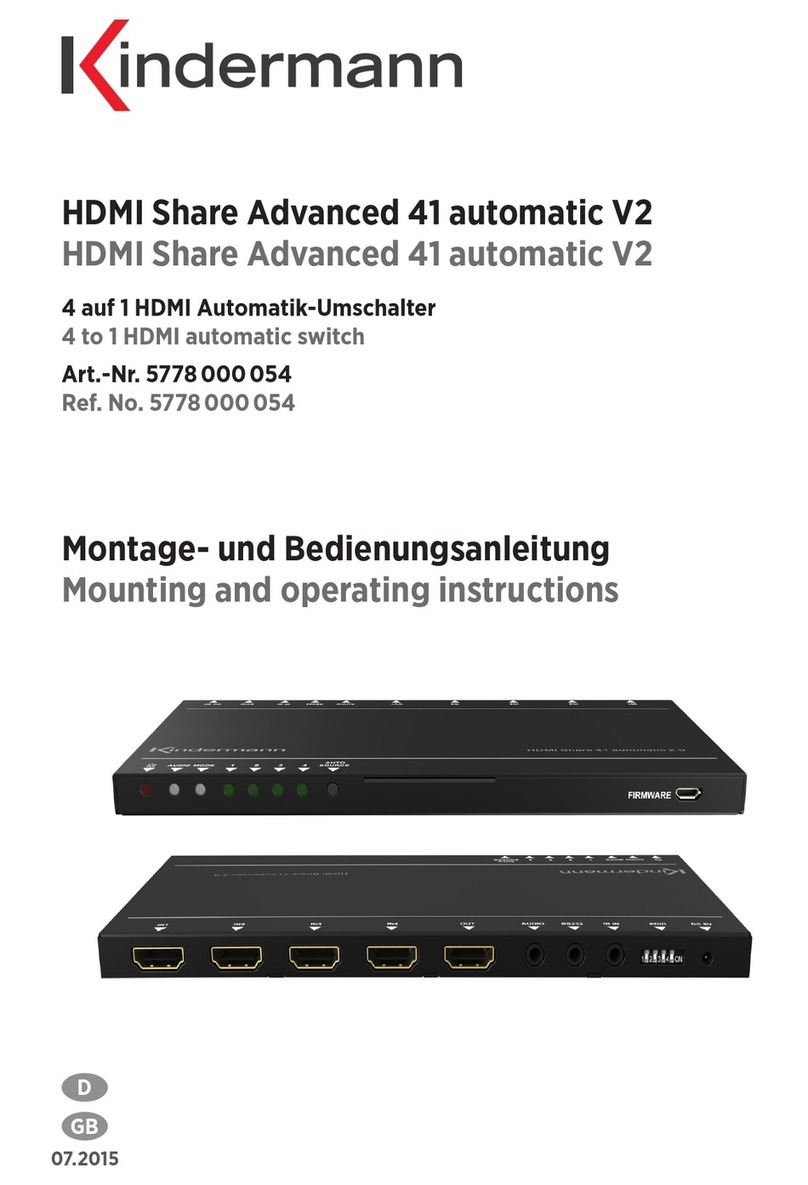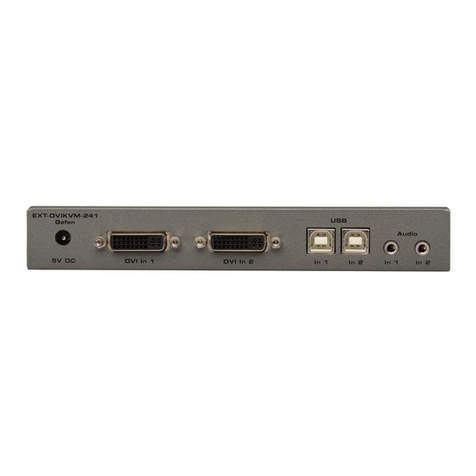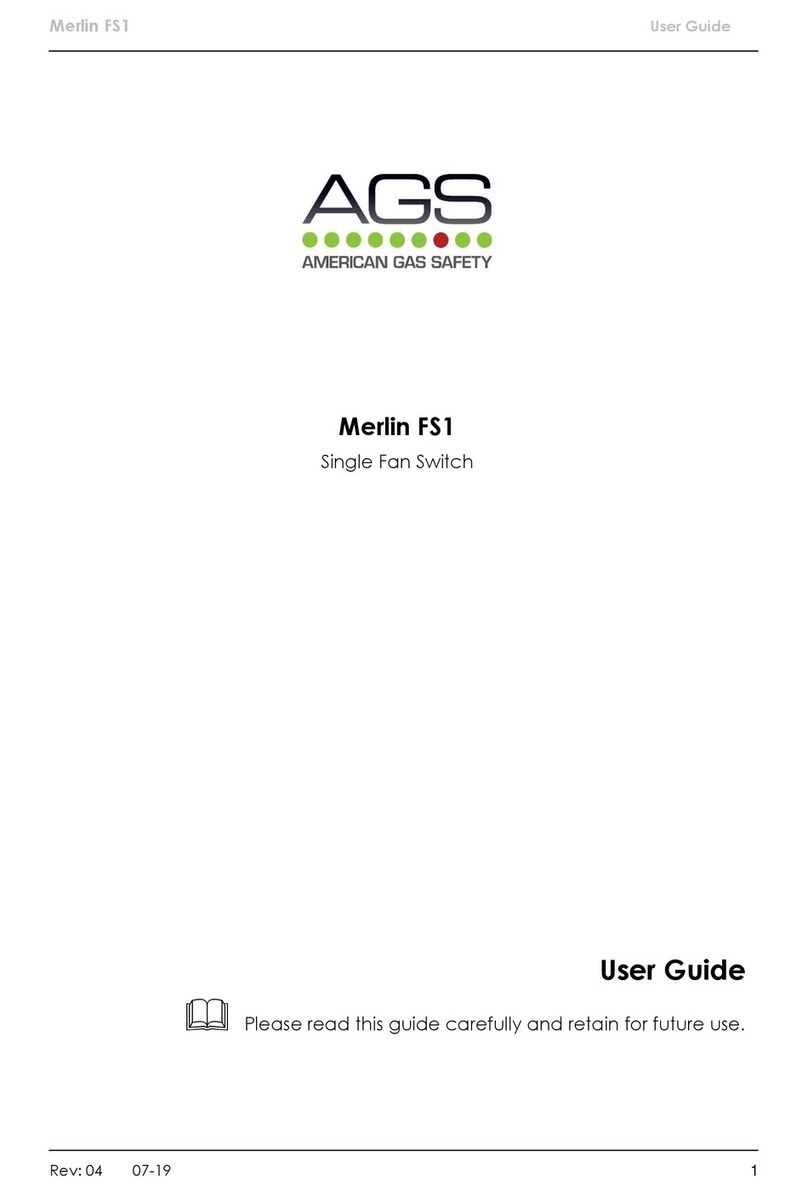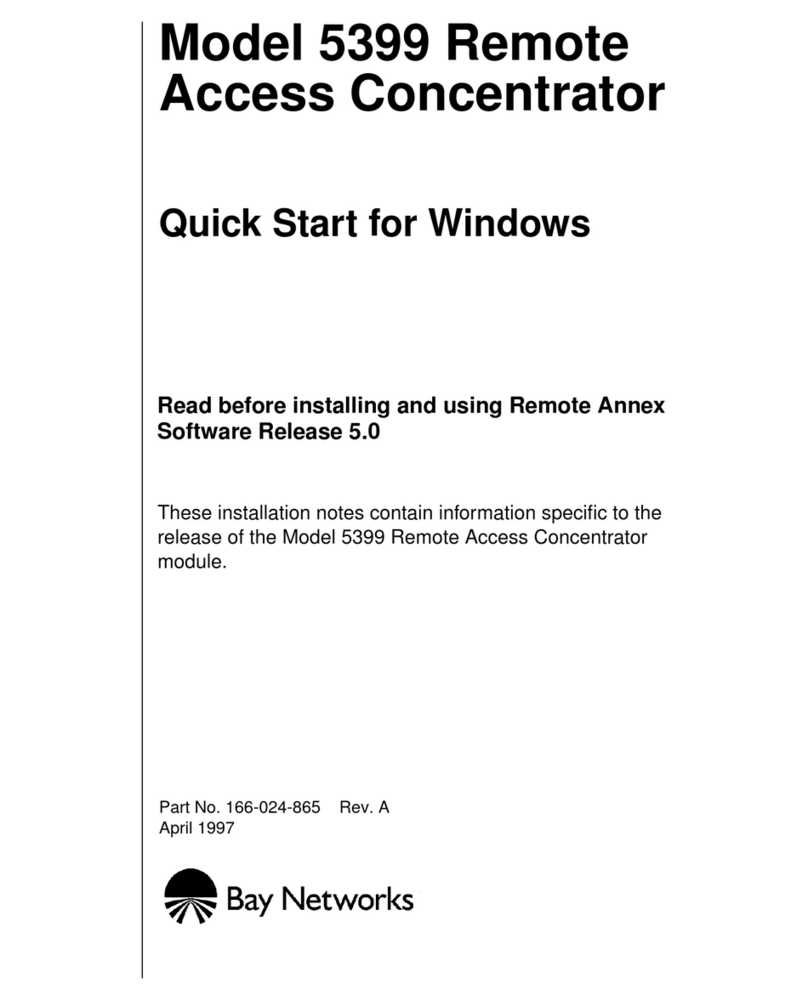Chris King ISO Hub User manual

ISO Hub Manual
register online
chrisking.com/warranty
year warranty
5
serial number

Contents
Introduction and Cautions..................................................................................................................1
Preparation
Wheel building....................................................................................................................1
Frame preparation....................................................................................................2
Installation/Removal of the brake rotor...................................................................2
Hub identification and Attachment Type................................................................2
One Piece Axle........................................................................................................2
FunBolts....................................................................................2
QR Adaptors..............................................................................2
Thru Axle...............................................................................................2
Two Piece Axle..........................................................................................................3
Set Up...............................................................................................................................3
Break-in....................................................................................................................4
Maintenance
Maintenance schedule............................................................................................4
Notes on RingDrive maintenance........................................................................................5
Lubrication: Normal/Cold/Wet conditions, In a pinch.....................................5
Disassembly/Reassembly/Adjustment of two piece axle on front ISO hub.......6
Disassembly/Reassembly/Adjustment of one piece axle on front ISO hub.......7
Disassembly/Reassembly/Adjustment/Conversion of -
Lefty SuperMax and Lefty LD front ISO Hub .............................................................8
Disassembly/Reassembly/Adjustment of one piece axle on rear ISO hub........10
ISO Single Speed rear hub............................................................................................12
Cogs/Chain/Chainline..............................................................................12
Cog Installation/Removal...........................................................................12
Disassembly/Reassembly/Adjustment of two piece axle on rear ISO hub....13
The RingDrive: Inspection/Basic Maintenance/Service................................15
In a pinch.........................................................................................................16
Reinstallation of the driveshell assembly.........................................16
Service of the bearings....................................................................................17
Universal Disc Brake Rotor Adaptors: Installation/Removal.................................18
Hub specifications and wheel building information................................................20 & 21
Additional support..................................................................................................................................14 & 19
Warranty and contact information........................................................................back cover

Congratulations
You have just purchased the finest hubs available. With proper care and maintenance you will
enjoy many years of the legendary performance you have come to expect from all Chris King
Precision Components. This manual is designed to give you the information needed for the setup,
use, and basic maintenance of your new hubs.
As with all Chris King Precision Components, our hubs are superbly designed and manufactured,
responsibly light, and meticulously finished. Our hubs feature our patented RingDrive engagement
system spinning around a 19.5mm aluminum axle on four sets of precision bearings, all of which
are manufactured in-house. This combination, housed in an elegant aluminum shell, offers the
solid and reliable performance demanded by serious cyclists. Like all of our components, our
ISO hubs are user serviceable.
Cautions
Do not use thread-locking compound on any part of your hub(s)
. The aluminum driveshells of
the rear hubs are softer than the steel shells, and we recommend using “spidered”-style cassettes
when possible. Avoid using individual cog-style cog sets with aluminum driveshells. We recom-
mend using our aluminum or Ti cog lock rings when installing 9 and 10 speed drivetrains
for increased thread purchase.
Chris King hubs feature adjustable bearing preload. The bearings should be kept in proper adjustment
for optimum product performance. Do not allow the adjustment to become loose, as this may cause a
loss of performance and could lead to damage to the hubs.
Chris King hubs with two piece axles are designed to be used in conjunction with quick-release
skewers. It is recommended that the skewer develop a minimum of 1100 lbs. of clamping force
when set. For best performance, use skewers with steel shafts. Titanium shafted skewers are
not recommended.
Preparation
Wheel building
Hub dimensions for wheel building are available on pages 20 and 21.
Chris King ISO hubs are designed to work with 13, 14 or 15 gauge spokes. Disc brake wheels must be
laced using at least a 2 cross lacing pattern. As the torque generated by driving the cassette requires
crossed spokes, so does the additional torque on the non-drive side flange generated by the braking action.
Radial lacing your ISO hubs is considered outside of the intended use and will void your warranty.
We will not be responsible for damaged or destroyed hubs, any consequential damages, or any
resulting labor costs due to radial lacing your ISO hub.
ISO Lefty® LD and ISO Lefty® SuperMax wheel builds will require the use of a truing stand Lefty® hub
adapter tool such as Park’s® TS-TA or Cannondale’s® Lefty® wheel-truing dummy axle.
Proper wheel building technique is essential in creating a strong wheel. Wheel building is a skill that
requires proper training and specialized tools and should be done by a trained professional. The
spoke tension on each side of the wheel should be as uniform as possible. Tension should not
exceed 120kgf (1200N).
The hub(s) come pre-adjusted from the factory. The adjustment has been made anticipating spoke
tension and skewer compression. Because of variations in wheel-building practices, a minor adjust-
ment should be performed upon completion of the wheel build. See the appropriate “Adjustment”
pgs. 6 - 14 and check the hub before using.
1

Frame Preparation
Check frame and fork dropouts to ensure that they are parallel to each other. Use an
appropriate tool made by a reputable bicycle tool manufacturer. Non-parallel dropouts
may damage or compromise the performance of your hub.
Installation and Removal of the rotor
Please follow your brake manufacturer’s specifications for rotor installation and rotor
bolt torque specifications.
Hub Identification and Attachment Type
One Piece Axle (see Figure 1)
2.5mm
hex bolt
Adjusting
Clamp
One Piece Axle
Figure 1
Helper
Hole
The one piece axle uses an adjusting clamp to adjust the hub bearing preload. Hubs
that are factory assembled with the one piece axle include: ISO 135/142/150/157mm
rear, ISO Single Speed rear, ISO 15/20/24mm front, and Universal Disc 145/160mm
rear. One piece axle disassembly, reassembly and adjustment procedures can
found on pages 7 - 12.
• FunBolts (see Figure 2)
Chris King FunBolts are hollow, stainless steel bolts that can be used as a
retention device in conjunction with standard 10mm slot-width rear dropouts
with the 135/145/160mm one piece rear axle. FunBolts should be torqued to
25 foot-pounds using an 8mm hex wrench.
FunBolts
Figure 2
QR Adaptors
Figure 3
• QR Adaptors (see Figure 3)
Chris King QR Adaptors allow for the use of a skewer-type retention device with
the 135/145/160mm one piece threaded rear axle. The adaptors are threaded
into both ends of the axle using a 5mm hex wrench.
• Thru Axle
ISO 15/20mm front and ISO 135 x 10mm, 135 x 12mm, 142 x 12mm, 150 x
10mm, 150 x 12mm, and 157 x 12mm rear hubs are attached to the frame with
a thru axle. The thru axle is supplied by the fork or frame manufacturer.
2

Two Piece Axle (see Figure 3)
Axle End Adjusting
Cone
Two Piece Axle
Figure 4
The two piece axle uses an adjusting cone to adjust bearing preload and an axle end
to lock the preload adjustment. Hubs that are factory assembled with the two piece axle
include: ISO front, Universal Disc front, and Universal Disc 140mm rear. Two piece axle
disassembly, reassembly and adjustment procedures can be found on pages 6,
10 and 11.The two piece axle design (see Fig. 4) is designed for a skewer-type retention
device and must not be modified or altered to accept any type of bolt-on retention device.
One piece and two piece axles are interchangeable on many ISO rear hubs. For details
on axle conversions, please refer to the hub specifications table on pages 20 and 21, call
our Technical Services Department at 800.523.6008, or check out our web site for tech
info and videos: www.chrisking.com
Front and rear hubs can be converted to fit many different axle standards and frame
mounting configurations. See the Hub Specifications table on pages 20 and 21 for
axle conversion options.
Set-Up
• ISO SD & LD Front
• Chris King front ISO hubs are designed to work with 100mm and 110mm fork drop
out spacing. Do not attempt to use your hub with any other dropout spacing. The
two piece axle design (see Fig. 4) is designed for a skewer-type retention device
and must not be modified or altered to accept any type of bolt-on retention device.
Chris King SD (small diameter) hub shells are compatible with both a standard QR
and a 15mm through axle. Our LD ( large diameter) hubs are hubs are designed
to be used in conjunction with 15mm and 20mm thru-axles only. The thru axle
is supplied by the fork manufacturer.
• ISO Lefty® SuperMax, and Lefty® LD Front
Chris King Lefty® SuperMax hubs are designed to be used in conjuntion with
Cannondale’s ® Lefty® SuperMax suspension systems only.
Chris King Lefty® LD hubs are compatible with non-Supermax Lefty® suspension
systems when using our 1mm Disc Spacer, and SuperMax Lefty® suspension
systems from Cannondale® with the use of our 1mm Disc Spacer and the correct
disc brake caliper adapter.
• ISO 135mm Rear
Chris King rear ISO 135mm hubs are designed to work with 135mm frame spacing. Do
not attempt to use your hub with any other dropout spacing. The one piece axle design
(see Fig. 1, pg. 2) can be used with Chris King FunBolts or with our QR adaptors, which
3

allow for the use of a skewer-type retention device. Additionally, 135 x 10mm and 135
x 12mm hubs are designed to be used in conjunction with 10mm and 12mm thru-
axles only. The thru axle is supplied by the bicycle frame manufacturer or through an
aftermarket supplier. Total axle width is 135mm.
The earlier two piece axle (see Fig. 4) is designed for exclusive use with a skewer-type
retention device and the hub can only be used with FunBolts by replacing the two
piece axle with the one piece axle. Do not modify or alter two piece axle systems to
accept thru-bolt retention devices.
• ISO 142mm Rear
Chris King 142 x 12mm hubs are designed to be used in conjunction with 12mm thru-axles
only. The thru axle is supplied by the bicycle frame manufacturer. Total axle width is 142mm.
• ISO 150mm Rear
Chris King 150 x 10mm and 150 x 12mm hubs are designed to be used in conjunction with
10mm and 12mm thru-axles only. The thru axle is supplied by the bicycle frame manufacturer.
Total axle width is 150mm.
• ISO 157mm Rear
Chris King 157 x 12mm hubs are designed to be used in conjunstion with 12mm thru-axles
only. The thru axle is supplied by the bicycle frame manufacturer. Total axle width is 157mm
• ISO Single Speed Rear
ISO Single Speed rear hub and cog set-up information can by found on pages 9 and 10.
The grease in your hub will provide optimum performance between 30°-110°F. The
bearings and RingDrive engagement mechanism come lubricated with a specially
formulated low-shear grease. To maintain maximum performance in extreme tem-
peratures see appropriate section under “Lubrication”, pg. 5.
Break-In
Once your new hub is placed in service, some settling may occur. Check adjustment
by attaching wheel into dropouts. Ride for 5-10 minutes, check for play or binding,
and readjust if necessary. Recheck after the first 1-5 hours of riding. Check cog lock
ring on rear hubs after the first 20 hours of use, and tighten if necessary. Continue
monitoring for the first 60 hours of use.
During the first 60 hours of use, above average amounts of drag may be noticed. This
is normal as the seals break in, and will soon diminish. If this causes chain sag while
back-pedaling, increase the B-tension (cage tension) on the rear derailleur.
The bearing grease is intentionally overpacked and excess grease may seep from
the bearing seals during the break-in period.
Maintenance
Maintenance schedule
Chris King ISO Hubs are designed to provide long life and high performance. Beyond
an occasional adjustment, the only maintenance necessary is cleaning, lubricating the
RingDrive (see “The RingDrive”, pg. 15), and re-lubricating the bearings (see “Service
of the bearings”, pg. 17). Riding conditions will determine how often to maintain your
hubs. As a beginning guideline, your hubs should be maintained every 6-12 months
in normal and dry conditions and every 3 months in wet or muddy conditions.
4

The bearings in your new Chris King hubs are of the highest quality. However, all bear-
ings will settle and eventually wear with use. Since looseness or “play” in the bearing
assembly can develop as a result of wear, Chris King hubs have been designed with
an adjustable bearing preload mechanism and any normal play can be eliminated
(see the appropriate “Adjustment” section, pgs. 6 - 14).
*Do not ride hub without the
proper preload adjustment
Notes on RingDrive™ maintenance
Normal preventative maintenance of the RingDrive is simple and can be performed using
basic tools (see “The RingDrive”, pg. 15). In many cases, a minor cleaning and reapplication
of lubricant is all that may be necessary. Judging when to perform this basic maintenance is
determined by riding style and conditions. As a guideline, your hubs should be maintained every
6-12 months in normal and dry conditions and every 3 months in wet or muddy conditions.
Annually or if bearing and freewheel drag is noticed or foreign debris is detected in the grease
and/or the grease looks hard or dry, a complete servicing (removal and cleaning) of the
RingDrive should be performed. Complete service includes the removal of the RingDrive
engagement mechanism and requires the use of our Hub Service Tool. See any authorized
Chris King dealer for complete service or you may purchase a Hub Service Tool Kit from your
dealer or directly from Chris King Precision Components. Chris King Precision Components
provides overhaul services at reasonable rates. Contact the Customer Service hotline
at 800-523-6008 for details.
Lubrication
Normal conditions
In normal riding conditions (32°-110°F), our RingDrive grease is recommended for the
bearings and the RingDrive. Do not substitute other brands of grease, as they may
cause premature wear and/or be too sticky for the helix of the RingDrive inhibiting
proper engagement.
Cold conditions
To ensure proper engagement in sub-freezing conditions, first be sure that there is no
water or moisture inside the hubshell. The hub may require an overhaul to ensure that the
hub interior is completely water-free. Then mix the grease in the RingDrive area, especially
on the helical splines of the driveshell, with 5-10 drops of Tri-flow. If you expect to be rid-
ing in temperatures that are consistently at or below freezing replace all internal lube with
a quality 10w synthetic oil. Do not over fill. We reccomend using a siliconal oil (Pedros
®
SynLube or Mobil 1
®
)
Wet conditions
Riding in wet conditions necessitates more frequent service. Often this is as simple as remov-
ing the axle and driveshell from the hub, removing any moisture from inside the hub shell, and
applying more grease to the needle bearing. This should not replace periodic complete disas-
sembly and maintenance, especially in extreme or prolonged wet conditions.
Since it is nearly impossible to seal a hub from water and still have it spin freely, we have designed
our hubs to be able to operate normally with some water intrusion. Although the bearings are stain-
less steel and will resist water induced corrosion, the lubricant will eventually deteriorate, leading to
premature bearing wear and possible failure. High-pressure spray washing, transporting or riding
the bicycle in the rain, or submersion in water while riding can all lead to lubricant contamination
5

by water. Be aware of these situations and service more frequently when they occur.
In a pinch...
If Chris King RingDrive lube in not available, a quality 10w synthetic oil may be substi-
tuted. Do not substitute other brands of grease, as they may be too sticky for the
helix of the RingDrive. Running the hub on oil will cause the RingDrive to be more
audible, yet functionally no different. Since this is a lighter lube than our RingDrive
lube your hub needs to be serviced more often.
If you have any additional questions, please call our Technical Services Department at
800.523.6008, or check out our web site for tech info and videos: www.chrisking.com
Disassembly of two piece axle on front ISO hub
(see Figure 5)
Axle End
Adjusting
Cone
Front Hubshell
Assembly
Front Two Piece Axle
Assembly
Figure 5
1. Insert 5 mm hex wrenches into both ends of axle assembly. *Pro Tip: Use a
bench vice to hold one of the 5mm hex wrenches.
2. Hold left hand stationary and turn right hand counterclockwise 1/4 turn until
assembly is loose.
3. Loosen and unscrew adjusting cone and axle end until they are free from main axle.
4. Slide out main axle.
5. Both hub shell bearing assemblies can now be accessed.
For bearing service information see “Service of the bearings”, pg. 17.
Further disassembly requires specialized tools. These come individually or in the Chris
King Hub Service Tool Kit, which is available at any authorized Chris King dealer, or
directly from Chris King Precision Components.
Reassembly of two piece axle on front ISO hub
(see Figure 5)
1. Lightly grease threads on axle, adjusting cone and axle end. Apply two drops
of Tri-flow
™
or a quality 10w synthetic oil to axle O-ring.
2. Insert main axle into hub shell.
3. If axle end and adjusting cone are assembled as one unit, disassemble by
threading axle end out of adjusting cone.
4. Thread adjusting cone onto the protruding threads of main axle.
5. Lightly snug adjusting cone up to bearing.
6. Thread axle end into adjusting cone until it stops.
7. Proceed to “Adjustment of two piece axle on front ISO hub”, below.
Adjustment of two piece axle on front ISO hub (see Figure 5)
6

1. Insert 5 mm hex wrenches into both ends of axle assembly. *Pro Tip: Use a
bench vice to hold one of the 5mm hex wrenches
2. Hold left hand stationary and turn right hand counterclockwise 1/4 turn until
assembly is loose.
3. Hold hex wrenches stationary and adjust bearing preload with adjusting cone.
4.
Advance adjusting cone until it just contacts bearing, then back off approximately
1/16 turn (this allows for axle compression while under skewer clamp pressure).
5. Once preload is set, tighten axle assembly to 110 inch-pounds.
6. Double check adjustment by clamping wheel into fork with quick-release.
Check for play or binding, and readjust if needed.
Disassembly of one piece axle on ISO front hub
(see Figure 6)
Figure 6
15/20/24mm
Hubshell Assembly
Adjusting
Clamp
15/20/24mm Thru Axle
Assembly
2.5mm
Hex Bolt
Helper
Hole
1. Remove the hub from the fork. Remove the disc brake rotor.
2.
Insert a 2.5mm hex wrench into adjusting clamp hex bolt, and loosen.
3. With adjusting clamp facing towards you, hold opposite end of axle stationary,
and rotate clamp in a counter clockwise direction to unscrew it from the thru-
axle. If adjusting clamp is difficult to remove, insert a 2.5mm hex key into “helper
hole” on adjusting clamp adjacent to 2.5mm hex bolt. Use the hex key as a
lever to unscrew adjusting clamp. Note: 15mm SD hubs feature a steel axle
end cap that will pop off of axle end as adjusting clamp is unthreaded from
axle.
4. Remove the axle from the hubshell.
For bearing service information see “Service of the bearings”, pg. 17.
Reassembly of one piece axle on ISO front hub (see Figure 6)
1. Lightly grease threads on adjusting clamp. Apply two drops of Tri-flow
™
to axle
O-ring
2. Insert the axle into the hubshell from the disc mount side.
3. Thread the adjusting clamp onto the protruding threads of the axle.
4.
Snug the adjusting clamp up to the bearing. Note: 15mm SD hubs feature a
steel axle end cap that must be hand-pressed back onto the end of the axle.
5. Proceed to “Adjustment of one piece axle on ISO front hub”, below.
Adjustment of one piece axle on ISO front hub (see Figure 6)
The one piece axle features an adjusting clamp which minimizes over tightening or over pre-
loading of the bearings. Adjustment may be accomplished while the hub is attached to the fork.
1. Loosen the adjusting clamp hex bolt using a 2.5mm hex wrench.
7

2.
Hand tighten the adjusting clamp onto the axle until it stops against the bearing.
3. Once the adjusting clamp is in position, use a 2.5mm hex wrench to tighten
the adjusting clamp hex bolt to 10 inch-pounds.
4. Check for play or binding and readjust if needed.
If you have any additional questions, please contact our Technical Service Department at
800-523-6008, or check out our website for tech info and videos: www.chrisking.com
ISO Lefty® LD and ISO Lefty® SuperMax
IMPORTANT
Please refer to Cannondale’s® Lefty® instruction manual for wheel installation and
removal information, http://www.Cannondale.com/manual_headshok/. Chris
King’s ISO Lefty® LD Front Hub and ISO Lefty® SuperMax Front Hub utilize the
same self-extracting hub removal system found in Cannondale® Lefty® and Lefty®
SuperMax Hubs. *The ISO Lefty® LD can be used with the SuperMax provided the
correct disc brake adapter is used. Please see http://www.Cannondale.com/
manual_headshok/ for more details.
Figure 7
ISO Lefty® SuperMax
Hubshell Assembly
Serial # Prefix - 2210
Cannondale®
Axle Bolt
1mm Disc Spacer
Lefty® Axle
ISO Lefty® LD
Hubshell Assembly
Serial # Prefix - 1720
LD
Adjustment
Clamp
8
Lefty®
Axle End
Cap

Converting ISO LD Front Hub to a ISO Lefty® LD Front Hub
Chris King Gen. 2 ISO LD Front Hubs are easily converted to work with Lefty® forks
by using our ISO Lefty® Upgrade Kit. When converting an ISO LD Front Hub to an
ISO Lefty® LD Front Hub make sure that your LD Front Hub is designated with a
1720 serial number prefix, this number is found on the hubshell. LD Front Hubs with
a 1710 designation are not compatible with an ISO Lefty® LD Front Hub Conversion.
Follow the disassembly procedure on pg. 7 to remove the standard ISO one piece
axle and use the reassembly procedure in this addendum to install your ISO Lefty®
LD Front Hub axle.
Disassembly of ISO Lefty® LD Front Hub and ISO Lefty®
SuperMax Front Hub (see Figure 7)
1. Remove hub from the fork prior to disassembly. The ISO Lefty® LD Front Hub
and ISO Lefty® SuperMax Front Hubs are designed to be self-extracting. Insert
a 5mm hex wrench through the Lefty® axle end cap and turn in a counter-
clockwise motion. The Cannondale® axle bolt will push against the Lefty® axle
end cap and pull the hub off of the fork.
*Removal of axle from front hub is only necessary for bearing service.
2. Using an 10mm hex wrench remove the Lefty® axle end cap. NOTE - The
Lefty® axle end cap is left-hand thread (turn counter-clockwise to tighten and
clockwise to loosen). Take care not to over tighten the Lefty® axle cap. *The
Cannondale® axle bolt is designed to nest in the axle cap and should come
off with the Lefty® axle end cap.
3. If not removed along with the Lefty® axle end cap, remove the Cannondale®
axle bolt from the axle.
4. Remove the disc brake rotor. *For ISO Lefty® LD Front Hubs be sure to also
remove the Chris King 1mm disc spacer.
5. Insert a 2.5mm hex wrench into the adjusting clamp hex bolt, and loosen.
6. With the adjusting clamp facing towards you, hold opposite end of axle
stationary with the Spline Drive Hub Tool. For more information on this tool visit
http://chrisking.com/shop. Rotate the clamp in a counter-clockwise direction to
unscrew it from the Lefty® axle. If adjusting clamp is difficult to remove, insert
a 2.5mm hex wrench into “helper hole” on the adjusting clamp adjacent to
2.5mm hex bolt. Use the hex wrench as a lever to unscrew
the adjusting clamp.
7. Remove the axle from the hubshell.
For bearing service information see “Service of the bearings” on
pg. 17 of the Chris King ISO Manual. Further disassembly requires
specialized tools. These tools come individually or in the Chris King
Hub Service Tool Kit, available from any authorized Chris King dealer,
or directly from Chris King Precision Components, visit our website
http://chrisking.com/tech/tech_hubs for specific ISO Lefty® LD and ISO Lefty®
SuperMax service information.
Reassembly of ISO Lefty® LD Front Hub and ISO Lefty®
SuperMax Front Hub (see Figure 7)
1. Lightly grease threads on adjusting clamp. Apply two drops of Tri-Flow™ to
9
Spline Drive Hub
Too l

axle o-ring.
2. Insert the axle into the hubshell from the disc mount side.
3. Thread the adjusting clamp onto the threaded end of the axle.
4. Once the adjusting clamp is in position, use a 2.5mm hex wrench to tighten
the adjusting clamp hex bolt to 1.13Nm (10 inch-pounds). *Use the Spline Drive
Hub Tool to hold the axle steady. Bearing adjustment may be accomplished
while the hub is attached to the fork.
5. Check for play or binding and readjust if needed. *See pg. 7 for more information
on the adjusment of one piece axle equipped ISO Front Hubs.
6. Apply two drops of Tri-Flow™ to the o-ring on the Cannondale® Axle Bolt.
7. Insert the Cannondale® Axle Bolt into the axle end cap.
8. Two drops of Vibra-Tite® VC-3 have been added to the threads of the axle end
cap. This is applied at the factory and is good for multiple uses. If resistance is
not apparent when threading on the axle end cap reapply two drops of Vibra-
Tite® VC-3 Threadmate to the threads. As a substitute, a small drop of Loctite
242 or 243 may be used.
9. Using the Spline Drive Hub Tool to hold the axle and a 10mm hex wrench,
install the Lefty® axle end cap. The Lefty® axle end cap is left-hand threaded.
Tighten the Lefty® axle end cap to 12.0Nm, take care not to over tighten.
10. Install the disc brake rotor. When using an ISO Lefty® LD Front Hub be sure
to install the 1mm disc spacer between the disc rotor and the hub shell as
specified by Cannondale®.
11. Slide the hub onto the Lefty® fork axle. Tightening the Lefty® axle bolt will
seat the hub on the Lefty® fork axle. Use a torque wrench to tighten the
Cannondale® axle bolt to 15.0Nm.
Disassembly of one piece axle on rear ISO hub (
see Figure 8)
1. Remove cassette lock ring and cassette using a chain whip and HG
™
cassette
lock ring removal tool.
*If using an XD Driveshell the End Cap is removed along with the cassette
use a small punch or small flat head screw driver to gently tap the Driveshell
Helper
Hole
Rear ISO
Hubshell Assembly
Standard Driveshell
Assembly
Rear One Piece
Axle Assembly
2.5mm
Hex Bolt
Adjusting
Clamp
Figure 8
10
XD Driveshell
Assembly
or

End Cap out of the cassette.
2. With adjusting clamp facing towards you, hold opposite end of axle stationary, and
rotate clamp in a counter clockwise direction to unscrew it from the thru-axle. If
adjusting clamp is difficult to remove, insert a 2.5mm hex key into “helper hole” on
adjusting clamp adjacent to 2.5mm hex bolt. Use the hex key as a lever to unscrew
adjusting clamp. Note: 142/157mm axles feature a steel axle end cap that will
pop off of axle end as adjusting clamp is pulled from axle.
3. Remove axle by pulling on drive side end of axle.
4. Hold hub or wheel in one hand and pull driveshell with other.
5. Hub shell bearings, RingDrive internals and driveshell bearing assemblies can
now be accessed.
For RingDrive inspection and maintenance information, see “The RingDrive”, pg. 15.
For bearing service information see “Service of the bearings”, pg. 17
Further disassembly requires specialized tools. These come individually or in the Chris
King Hub Service Tool Kit, which is available at any authorized Chris King dealer, or di-
rectly from Chris King Precision Components.
Reassembly of one piece axle on rear ISO hub
(see Figure 8)
1. Lightly grease threads on adjusting clamp. Apply two drops of Tri-flow
™
to axle
O-ring. If using QR adaptors or FunBolts, apply anti-seize to threads before
threading them into the axle.
2. Apply two drops of Tri-flow
™
to driveshell O-ring.
Insert driveshell into the hub
shell; turn in a clockwise motion while letting it pull itself in. A distinctive click
sound will indicate that the driveshell is firmly seated.
3. Insert finger from the non-drive side to push spring retainer to ensure Driveshell
is seated correctly
4. Insert main axle, small end first into driveshell. Continue until axle is through the
hub and large end is firmly seated in driveshell.
5. Thread adjusting clamp onto the protruding threads of axle.
6.
Snug the adjusting clamp up to the bearing. Note: 142mm and 157mm axles feature
a steel axle end cap that must be hand-pressed back onto the end of the axle.
7. Proceed to “Adjustment of one piece axle on rear ISO hub”, pg. 10.
Note: To improve performance, the axles have been precisely matched with the needle
bearings in the driveshell. Be sure to combine only like numbered parts, (e.g., #3 axle
with #3 needle bearing race).
Adjustment of one piece axle on rear ISO hub
(see Figure 8)
The one piece rear axle assembly features an adjusting clamp that minimizes over tight-
ening or over preloading of the bearings. Adjustment may be accomplished while axle
is attached to bicycle frame or in a truing stand.
1. Loosen the adjusting clamp hex bolt using a 2.5mm hex wrench.
2. Hand tighten the adjusting clamp onto the axle until it stops against the bearing. If
adjusting clamp is difficult to move, insert a 2.5mm hex wrench into “helper hole”
11

12
on adjusting clamp adjacent to 2.5mm hex bolt. Use the hex key as a lever
to turn adjusting clamp.
3. Once the adjusting clamp is in position, use a 2.5mm hex wrench to tighten
the adjusting clamp hex bolt to 10 inch-pounds.
4. Check for play or binding and readjust if needed.
Note: Correct adjustment of the rear hub is necessary for proper engagement of the
RingDrive. If the hub is run loose, the RingDrive may not engage properly and could
lead to permanent damage of the internal parts.
*Do not ride hub without the proper
preload adjustment
ISO Single Speed rear hubs (see Figure 9)
The ISO Single Speed rear hub uses our Single Speed one piece axle design. For
disassembly, reassembly and adjustment information, follow the one piece axle in-
structions on pages on pages 10 and 11 of this manual.
Cogs (see Figure 10)
Chris King Single Speed hubs use a cassette-style cog mounting system.
Special splines and lock rings have been designed to accept our premium
quality stainless steel cogs. They are available in sizes from 12t to 20t.
Cogs can easily be removed and changed using standard cassette tools.
Chain
Chris King cogs are designed to be used with an 8-speed or 3/32” chain
only.
Chain line
Setting the single speed cog to the proper chain line is essential to achiev-
ing the best performance from a bicycle’s drivetrain. Our Single Speed rear hub allows
for center-to-cog chainlines of 45, 50 and 55mm. To determine the proper chainline
on a single speed bicycle with 135mm rear dropout spacing, follow these instructions:
1. Determine the front chain ring position by measuring the distance from the
exact middle of the bottom bracket shell to the front chainring.
2. Locate the middle point of the rear ISO Single Speed hub by measuring 67.5mm
from the inside face of the rear drop out to the middle of the hub.
3. From that middle point, use the front chain ring position measurement found
in step 1, and measure from the hub center out to the driveshell.
4. This is the point on the driveshell where the rear single speed cog should be
Single Speed
Cog Spacers
Single Speed
Cog Lock
Ring
2.5mm
Hex Bolt
Single Speed
Axle Assembly
Single Speed
Driveshell
Assembly
ISO Single Speed
Rear Hubshell
Assembly
Adjusting
Clamp
Figure 9
Helper
Hole
Figure 10
Cog

located to obtain the proper center-to-cog chainline.
5.
Use the Single Speed Cog Spacers and Lock Ring that is included with the hub
to secure the cog in the proper position. Proceed to “Cog Installation”, below
.
Cog installation
1.
Slide cog onto driveshell spline. Cogs are symmetrical, and can be installed either
side out. Install Single Speed Cog Spacers, making sure cog is set at the proper
chain line. To determine proper chain line, see “Chain Line” pages 12 and 13.
2. Lightly grease the threads on the lockring then thread Single Speed Cog Lock
Ring onto driveshell.
3.
Insert HG™cassette lock ring tool into Cog Lock Ring, and tighten to 20 foot pounds.
Cog removal
1. Using a chainwhip, hold cog stationary from counterclockwise rotation.
2. Insert HG
™
cassette lock ring tool into Cog Lock Ring.
3. Loosen Cog Lock Ring by rotating it until it is free from driveshell.
4. Slide cog from spline.
Disassembly of two piece axle on rear ISO hub (see
Figure 11)
Rear ISO
Hubshell Assembly
Driveshell
Assembly
Rear Two Piece
Axle Assembly
Figure 11
Axle End
Adjusting
Cone
The following instructions assume that the driveshell is facing to the right:
1. Insert 5 mm hex wrenches into both ends of axle assembly. *Pro Tip: Use a
bench vice to hold one of the 5mm hex wrenches.
2. Hold left hand stationary and turn right hand counterclockwise 1/4 turn until
assembly is loose.
3. Loosen and unscrew adjusting cone and axle end until they are free from main axle.
4. Slide out main axle.
5. Remove axle by pulling on drive side end of axle.
6. Hold hub or wheel in one hand and pull driveshell out with the other.
7.
Hub shell bearings, RingDrive engagement and driveshell bearing assemblies can now
be accessed.
For RingDrive inspection and maintenance information, see “The RingDrive”, pg. 15.
For
13

bearing service information see “Service of the bearings”, pg. 17.
Further disassembly requires specialized tools. These come individually or in the Chris
King Hub Service Tool Kit, which is available at any authorized Chris King dealer, or
directly from Chris King Precision Components.
Reassembly of two piece axle on rear ISO hub
(see Figure 11)
1. Lightly grease threads on adjusting cone and axle end. Apply two drops of
Tri-flow
™
to axle O-ring.
2.
Insert main axle through driveshell. The axle is properly seated when the threaded
end appears through the bearing and the end is flush with the end of the hub shell.
3. If axle end and adjusting cone are assembled as one unit, disassemble by
threading axle end out of adjusting cone.
4. Thread adjusting cone onto the protruding threads of main axle.
5. Thread axle end into adjusting cone until it stops.
6. Proceed to “Adjustment of two piece axle on rear ISO hub”, below.
Note: To improve performance, the axles have been precisely matched with the needle
bearings in the driveshell. Be sure to combine only like numbered parts, (e.g., #3 axle
with #3 needle bearing race).
Adjustment of two piece axle on rear ISO hub
(see Figure 11)
The following instructions assume that the driveshell is facing to the right:
1. Insert 5 mm hex wrenches into both ends of the axle assembly. (See page
7 for more info)
2. Hold left hand stationary and turn right hand counterclockwise 1/4 turn until
the assembly is loose.
3. Hold hex wrenches stationary and adjust bearing preload with the adjusting
cone. You may use the hub cone adjusting tool if necessary.
4.
Advance adjusting cone until it contacts bearing. The rear hub takes a slightly
higher amount of preload than “no play”, since some settling may occur while riding.
5. Once preload is set, tighten axle end to 110 inch-pounds.
6. Check adjustment by clamping wheel into frame with quick-release. Ride for
5-10 minutes, check for play or binding, and readjust as necessary. Double
check adjustment after the first 5-10 miles of riding.
Note: Correct adjustment of the rear hub is necessary for proper engagement of the
RingDrive. If the hub is run loose, the RingDrive may not engage properly and could
lead to permanent damage of the internal parts.
*Do not ride hub without the proper
preload adjustment
14

15
Additional Support
Check our web site often for updated movies and technical information produced in
an effort to help you, our customers, stay on your bike. Visit: http://chrisking.com/
tech/tech_movies.html
Additional questions? Please email us at info@chrisking.com or call the Customer
Service hotline at 800-523-6008.
The RingDrive™
Inspection
Having removed the axle and driveshell (as instructed in “Disassembly...” pgs 10
and 11), the RingDrive is accessible through the large side of the hub shell. Visually
inspect the hub’s interior. Under normal conditions the grease should look moist and
may have darkened slightly. A modest film should coat the moving parts.
As with the rest of the hub, the RingDrive is designed to operate with some water
contamination. Water intrusion can usually be remedied with basic maintenance.
However, if foreign debris is detectable in the grease and/or the grease looks hard
or dry, then a complete removal and servicing of the RingDrive is necessary.
Basic maintenance
1.
Take a clean, lint free rag and wipe any spent lubricant from inside the hub shell.
Be careful not to drag any dirt or debris from outside the hub into the interior area.
2. Once the interior is clean in appearance, locate the helical splines of the
drive ring about an inch inside the large bearing.
3. Using a toothbrush, pull the bristles across the helix in an outward direction.
Work your way all the way around the inner circumference to remove any
small particles that may be in the spline grooves.
4. Once completed, wipe the area directly in front of the helix to remove any
debris. This method should be used to clean the helix on the driveshell as well.
(If compressed air is available, blow across the helixes in line with the spline
grooves to remove any debris).
With the interior wiped down and the helixes brushed clean, a fresh application of
lubricant should be applied. The RingDrive is designed to work with our specially
formulated low shear RingDrive grease. Do not substitute other brands of grease,
as they may be too sticky for the helix of the RingDrive.
5. Lubricate by reopening a gap between the drive rings, and laying a bead of
RingDrive grease on the teeth between them.
6. Apply a bead of RingDrive grease to helical splines on driveshell. Then apply
a few drops of Tri-flow
™
onto the helical splines and the o-ring of the driveshell.
7. Before reinserting the driveshell into RingDrive area of the hub, the helical
splines must be clean of any debris. *An optional Stainless Steel driveshell
is available for riders who are experience above average wear.
8. Proceed to “Reinstallation of the driveshell assembly”, pg. 16.

Service of the RingDrive™
In addition to the basic maintenance of the RingDrive, a complete removal and servicing may be
necessary. Complete service requires our Hub Service Tool Kit and, as a basic guideline, should
be performed at least once every 12 to 24 months. See any authorized Chris King dealer for
complete service or you may purchase a Hub Service Tool Kit from your dealer or directly from
Chris King Precision Components. Chris King Precision Components provides overhaul ser-
vices at reasonable rates. Contact the Customer Service hotline at 800-523-6008 for details.
In a pinch...
If you need to perform a RingDrive service and don’t have the Hub Service Tool Kit or
cannot make it to a dealer, this method may be used for temporary results:
1. Remove the axle and driveshell to access the interior RingDrive area.
2. Push the drive ring with helical splines inward to open a gap, exposing the
drive teeth and flush the interior with a light solvent-based spray lubricant (e.g.,
WD-40
™
) until the area appears clean. Blow off any remaining solvent until
completely dry.
3. If contamination is still apparent, repeat flushing and blow completely dry. A
complete service of both hub shell bearings should be performed at the same
time. For bearing service information see “Service of the bearings”, pg. 17.
4. Finish by performing the “Basic maintenance”, pg. 15.
5. After assembly, carefully hand test hub for smooth operation of the bearings
and consistent, positive engagement of the RingDrive. If performance is not
improved to original quality, a complete RingDrive removal service must be
performed.
Reinstallation of the driveshell assembly
1. Check the helical splines of the driveshell for any particles or debris before
proceeding; the driveshell must be clean before installing.
2. Apply several drops of Tri-Flow
™
on the helical spline, O-ring, and tapered
diameter directly adjacent the O-ring. Apply a bead of RingDrive lube to the
helical splines.
3. Insert driveshell into hub shell, slowly. As the driveshell enters the RingDrive
area, it will want to mesh the helical splines of the drive ring. As it begins to
mesh, a slight clockwise turning motion of the driveshell will help pull it into
the hub shell. Continue twisting as the driveshell pulls itself into the hub shell.
At the bottom of its inward movement, an audible “click” or “pop” sound
indicates that it has found home and is fully seated. The “click” or “pop” is the
spring retainer popping onto the driveshell and the driveshell seating on the
bearing, indicating the driveshell is fully inserted. Some pushing pressure on
the driveshell may be necessary to pop the spring retainer onto the end of
the driveshell. You can check to make sure the driveshell is properly seated
by checking with your fingers from the non-drive side of the hubshell.
Note: During removal of the driveshell unit the spring retainer plate can become off-
centered. Be sure that the spring retainer is properly centered against the back of the
16

spring area before reinstalling the driveshell. Make sure the o-ring is correctly seated.
4. Test engagement by spinning driveshell in both directions. If it does not engage,
remove driveshell, check cleanliness and reinsert. Retest.
5. The hub is now ready to have the axle
installed.
Service of the bearings
(see figure 11)
Chris King sealed bearings have remov-
able snap rings that hold the rubber seals
in place.
1. Carefully, using a small screwdriver,
pick, or penknife, remove the snap
ring by inserting tool into split of
snap ring. Gently work one end of the
snap ring toward bearing center until
it is out of its groove. Follow the ring around with the tool until the snap ring is
completely dislodged.
2. Lift and remove exposed rubber seal to access the interior of the bearing.
3. Thoroughly flush the bearing with a light spray lubricant (e.g., WD-40™) and
blow dry.
Note: Some solvents, synthetic lubricants, and greases with high-pressure additives
may attack and damage seals and other nonmetallic materials. Minimize exposure
to these substances and thoroughly dry hub after cleaning.
4. Wipe dirt and other contaminants from the seals and snap rings. Avoid
cleaning the seals with solvent, which could cause deterioration.
5. Lay a bead of our RingDrive grease (see “Lubrication”, pg. 6), filling the gap
between the inner and outer races 3/4 the way around bearing. Do not
overfill bearing with lube, as this may cause excess drag. Rotate the inner
race to work grease throughout the ball area.
6. Reinstall black rubber seal between inner and outer bearing race. If using the
original seal, reinstall using the same orientation as when they were originally
installed, as this will minimize drag.
7. Insert one edge of snap ring into groove of outer bearing race. Press along
entire groove until snap ring is fully seated; a small gap should be visible
between both ends of the snap ring.
8. Turn inner race of bearing by hand to test for binding. If bearings do not run
smooth, repeat steps 1-8. Binding is often a result of improperly seated seals
and/or snap rings.
Used snap rings and seals can be reinstalled unless warped, punctured, or otherwise
damaged. If damaged, replacement seals and snap rings are available from any
authorized Chris King dealers or directly from Chris King Precision Components.
17
Bearing
Assembly
Rubber Seal Snap Ring
Figure 11

18
Universal Disc Brake Rotor Adaptors
Brake rotor adaptors are used on Universal Disc front and rear hubs to accommodate
ISO and other disc brake systems. These various adaptors are offered in different
widths to correctly position disc brake rotors. Be sure to use the adaptor designed
for your brake system. Do not attempt to modify your adaptor to work with rotors
other than those for which they were designed. Mount the brake rotor according to
manufacturer’s instructions. Rotor mounting bolts should thread 8mm into the rotor
adaptor and must not extend through the brake rotor adaptor or contact the hub.
Helper
Hole
2.5mm
Hex Bolt
Figure 12
Rear One Piece
Axle Assembly
Driveshell
Assembly
Universal Disc
Rear Hubshell
Assembly
Rotor
Adaptor
3mm
Hex Bolts
Adjusting
Clamp
Installation of rotor adaptor (see Figure 12)
Before installation, thoroughly clean both the brake rotor adaptor and the splines on
the hub shell. Any debris on the splines may not allow the rotor to run true, inhibiting
the performance of the brake.
1. Apply a light amount of grease to rotor adaptor bolts. Do not use Loc-Tite™ or
other sleeving compound to secure rotor adaptor.
2.
Place the adaptor onto the splines. When snug, the adaptor should leave an even
gap approximately the width of a piece of paper between the hub and the adaptor.
3. Insert the three bolts provided. In an alternating pattern, hand tighten adaptor
bolts to pull adaptor down evenly.
4. Using a 3mm hex wrench, finish torque to 28 inch pounds. Do not over tighten.
Removal of rotor adaptor (see Figure 12)
1. Remove the disc brake rotor if it covers the three mounting bolts.
2. Remove the three adaptor mounting bolts using a 3mm hex wrench.
3. To remove the rotor adaptor from the tapered splines, pry between the adaptor
and the hub using two opposing plastic tire levers (it should pop off easily). Do
not use metal objects, such as screw drivers, to release the adaptor.
Other manuals for ISO Hub
1
This manual suits for next models
10
Table of contents
Popular Switch manuals by other brands
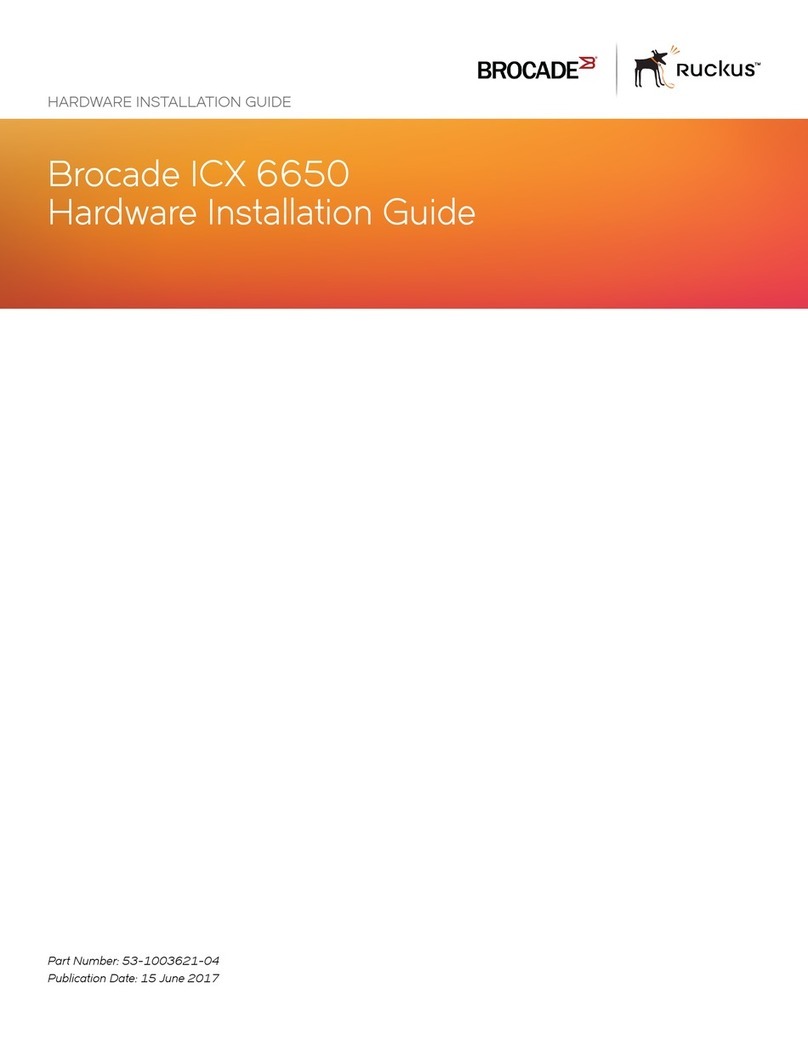
Brocade Communications Systems
Brocade Communications Systems ICX 6650 series Hardware installation guide

Waeco
Waeco CoolPower MPS35 Installation and operating manual
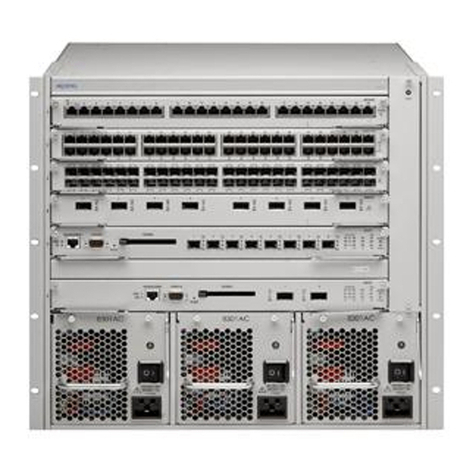
Avaya
Avaya Ethernet Routing Switch 8300 Series Installation

Lilin
Lilin PS3064DM user manual
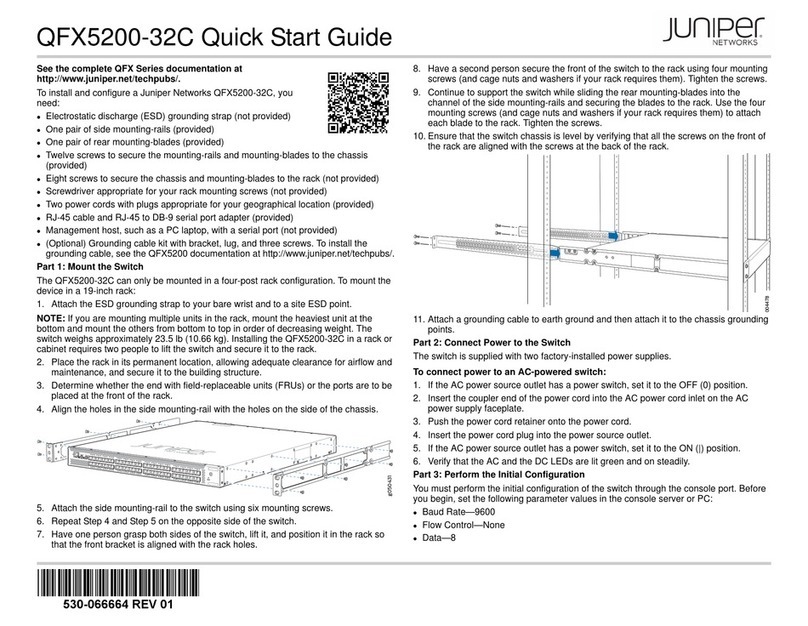
Juniper
Juniper QFX5200-32C quick start guide

Bang & Olufsen
Bang & Olufsen BeoSound Moment user manual

CM
CM SAFE CL Original Operating Instruction
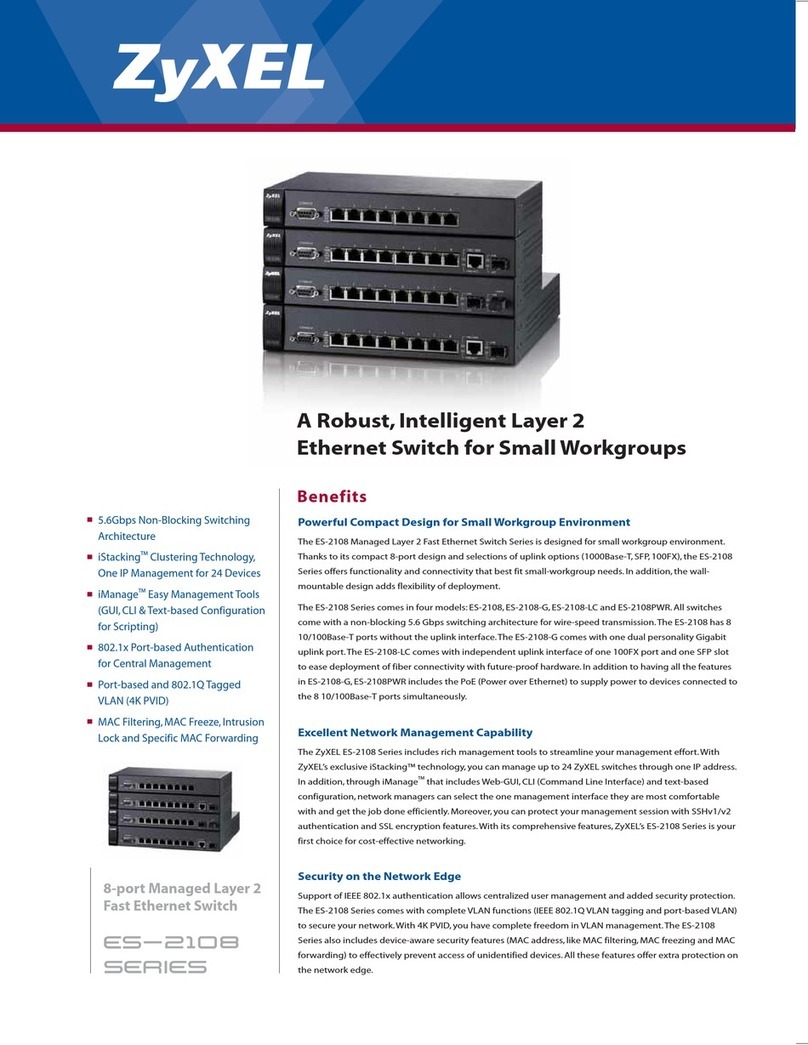
ZyXEL Communications
ZyXEL Communications ES-2108 Specifications
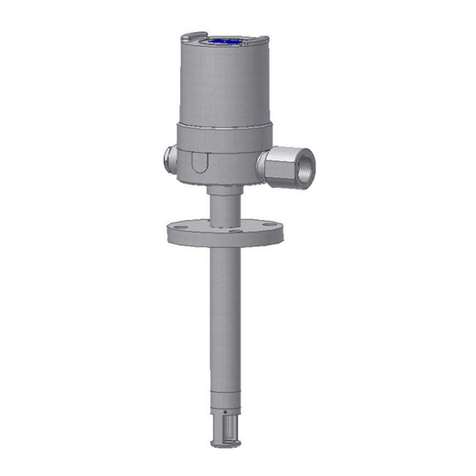
HITROL
HITROL HTML-S instruction manual
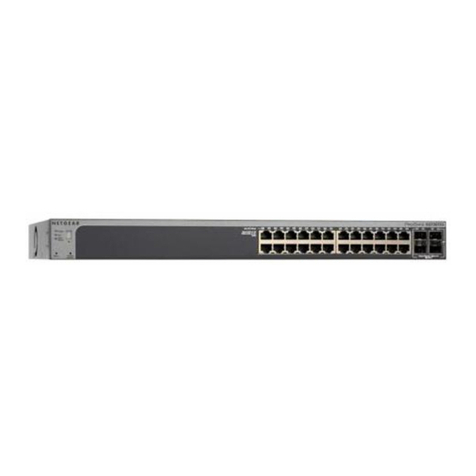
NETGEAR
NETGEAR GS728TXS installation guide
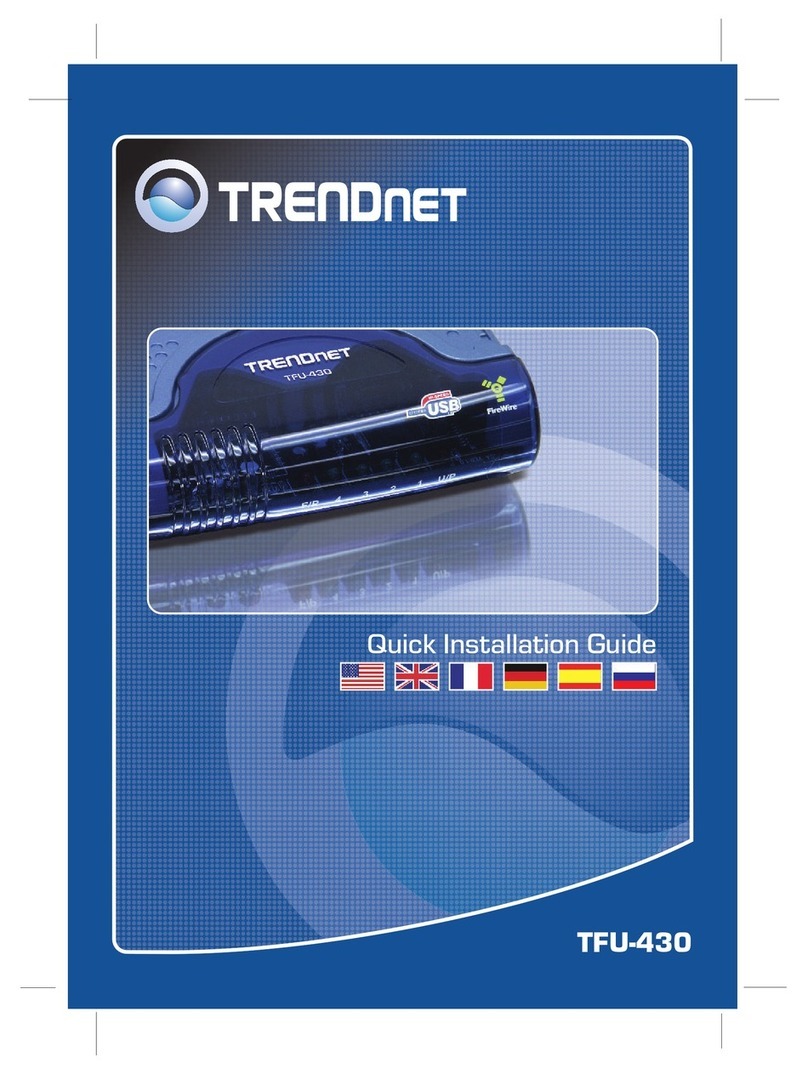
TRENDnet
TRENDnet TFU-430 Quick installation guide
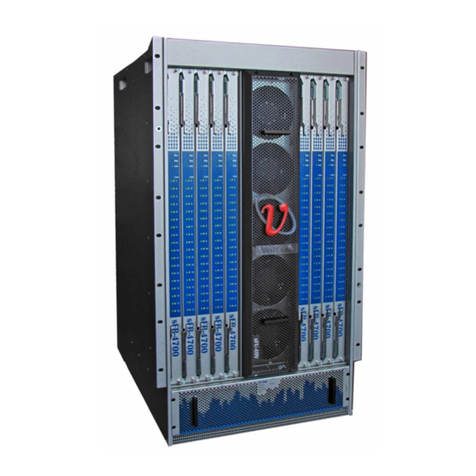
Mellanox Technologies
Mellanox Technologies Grid Director 4700 installation manual
